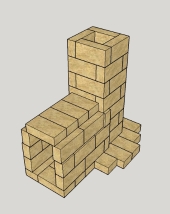










God of procrastination https://www.youtube.com/watch?v=q1EoT9sedqY




Success has a Thousand Fathers , Failure is an Orphan
LOOK AT THE " SIMILAR THREADS " BELOW !








In all my years as a chemist, this is the first time I've heard the phrase "phosphorus smell". Do you mean it smells like burnt matches? Or firecrackers that just went off?
 so I didn't explain good enough. I said "phosphorus" because we here use the same word for "matches" and I thought it was because they should be made of that...
so I didn't explain good enough. I said "phosphorus" because we here use the same word for "matches" and I thought it was because they should be made of that...
Most of that type of odor can be ascribed to SO2, as there are various sulfur compounds used in gunpowders and matches. A lot of things, on their first firing will offgas strange smelling fumes. Generally, repeated firing cycles will reduce the amount of these compounds until there is no residue to cause the odor. If it really bothers you, take it outside to air it out. If it's not really movable, blow air through it and vent it to the outside.




iron (among others) sulphide that happens to be on these clays








Jose Manuel Bonilla wrote: So what I would like to know is wether the sulphur inside the clay would estabilize somehow and stop going out into the air with the repeated firings... hope so!
Manuel

|
I like my tiny ads with a little salt
Freaky Cheap Heat - 2 hour movie - HD streaming
https://permies.com/wiki/238453/Freaky-Cheap-Heat-hour-movie
|




